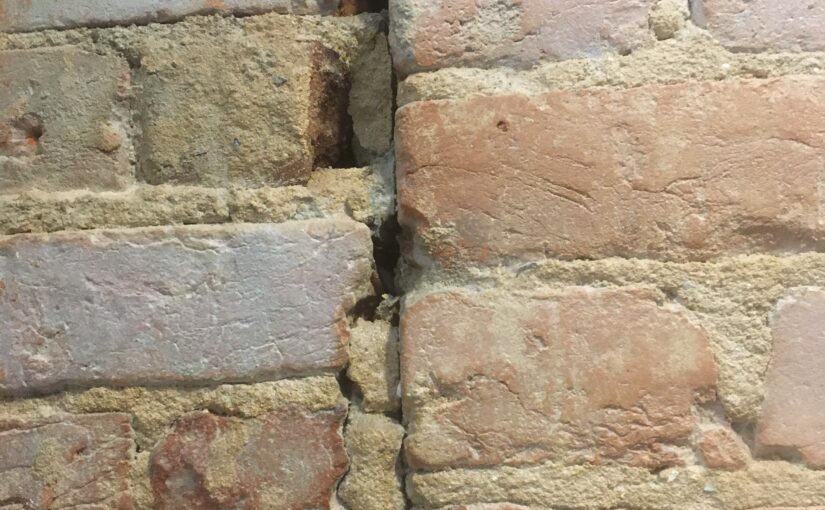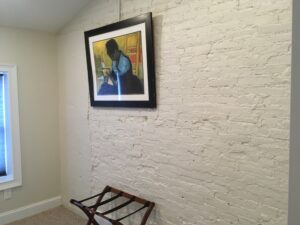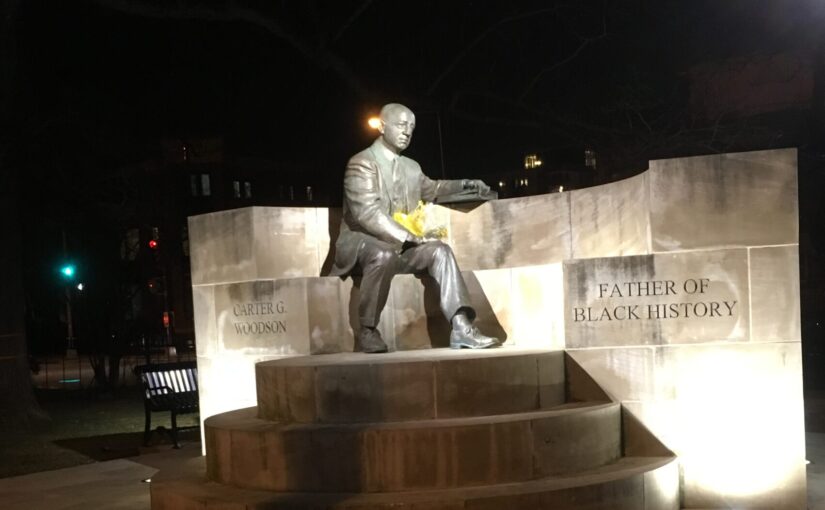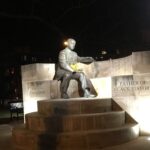It’s Black History Month, so I am continuing with the series of posts regarding Shaw resident and Father of Black History, Carter G. Woodson and his book The Mis-Education of the Negro, published in 1933.
The focus of this chapter is the question of how Afro-Americans can make a living, conduct business and maybe thrive. Woodson’s main theme of the book is a criticism of the education of African-Americans (thus the Mis-Education of the Negro). He continues his criticism of vocational schools for Blacks saying they don’t provide any value to their students. “For example, some of our schools are still teaching individual garment making which offers no future today except in catering to the privileged and rich classes. ” Then he mentions,” The education of the masses has not enabled them to advance very far in making a living and has not developed in the Negro the power to change this condition. It is revealed that in many establishments the Negro when a young man starts as a janitor or porter and dies in old age in the same position.”
Negroes do not need some one to guide them to what persons of another race have developed. They must be taught to think and develop something for themselves. It is most pathetic to see Negroes begging others for a chance as we have been doing recently. “Do not force us into starvation.” we said. “Let us come into your stores and factories and do a part of what you are doing to profit by our trade.” The Negro as a slave developed this fatal sort of dependency; and, restricted mainly to menial service and drudgery during nominal freedom, he has not grown out of it. Now the Negro is facing the ordeal of either learning to do for himself or to die out gradually in the bread line in the ghetto.
And once again, he is critical of the ‘highly educated’ Black person.
Our advanced teachers, like “most highly educated” Negroes, pay little attention to the things about them except when the shoe begins to pinch on one or the other side. Unless they happen to become naked they never think of the production of cotton or wool; unless they get hungry they never give any thought to the output of wheat or corn; unless their friends lose their jobs they never inquire about the outlook for coal or steel, or how these things affect the children whom they are trying to teach. In other words, they live in a world, but they are not of it. How can such persons guide the youth without knowing how these things affect the Negro community?
Another form of mis-education is what,” the Negro has learned from others how to spend money much more rapidly than he has learned how to earn it.” Then there is the mis-education of imitation and duplication as opposed to invention. He has several success stories of invention. A furniture maker in North Carolina, a man in Cincinnati who created corded beds, and a woman in Columbia, MO who made some exceptional biscuits which had all races coming to her door. This reminds me of something in Booker T. Washington’s book Up From Slavery, where he talked up Tuskegee’s brick making facilities. Invent or find a product to make that is of good quality, excel in it’s creation and Black and White dollars will make you a success.
Black Anti-Blackness
So there’s this:
….For example, not long ago a committee of Negroes in a large city went to the owner of a chain store in their neighborhood and requested that he put a Negro manager in charge. This man replied that he doubted that the Negroes themselves wanted such a thing. The Negroes urging him to make the change assured him that they were unanimously in favor of it. The manager, however, asked them to be fair enough with his firm and themselves to investigate before pressing the matter any further. They did so and discovered that one hundred thirty-seven Negro families in that neighborhood seriously objected to buying from Negroes and using articles handled by them. These Negroes, then, had to do the groundwork of uprooting the inferiority idea which had resulted from their mis-education.
and
… While persons of African blood are compelled to sustain closer relation to their own people than to other elements in society, they are otherwise influenced socially and economically. The Negro community suffers for lack of delimitation because of the various ramifications of life in the United States. For example, there may be a Negro grocer in the neighborhood, but the Negro chauffeur for a rich man down town and the washerwoman for an aristocratic family in “quality row” will be more than apt to buy their food and clothing at the larger establishment with which their employers have connections, although they may be insulted there. Negroes of the District of Columbia have millions of dollars deposited in banks down town, where Negro women are not allowed in the ladies’ rest rooms.
Right in the heart of the highly educated Negro section of Washington, too, is a restaurant catering through the front door exclusively to the white business men, who must live in the Negroes’ section to supply them with the necessities of life, and catering at the same time through the back door to numbers of Negroes who pile into that dingy room to purchase whatever may be thrown at them. Yet less than two blocks away are several Negroes running cafés where they can be served for the same amount and under desirable circumstances. Negroes who do this, we say, do not have the proper attitude toward life and its problems, and for that reason we do not take up time with them. They do not belong to our community. The traducers of the race, however, are guiding these people the wrong way. Why do not the “educated” Negroes change their course by identifying themselves with the masses?
For similar reasons the Negro professional man may not always have a beautiful home and a fine car. His plight to the contrary may result from action like that of a poor man who recently knocked on the author’s door about midnight to use his telephone to call the ambulance of the Casualty Hospital to take immediate charge of his sick wife. Although living nearer to the Freedmen’s Hospital, where more sympathetic consideration would have been given this patient, he preferred to take her to the other hospital where she would have to be carried through the back yard and placed in a room over a stable. He worked there, however; and because of long association with his traducers and the sort of treatment that they have meted out to him he was willing to entrust to their hands the very delicate matter of the health of his wife. This was a part of his community.
To be fair, if not gushing blood or close to death I’d Uber over to another hospital. Howard (formerly Freedmen’s mentioned above) is the closest hospital to me, and I am grateful it is there. But when given a choice, I’ve chosen other facilities. It’s not because Howard is a hospital that primarily serves the African American community, it is because it has a reputation, and I have choices. Heck even some former Truxton Circle residents didn’t want to be at Freedmen’s.




